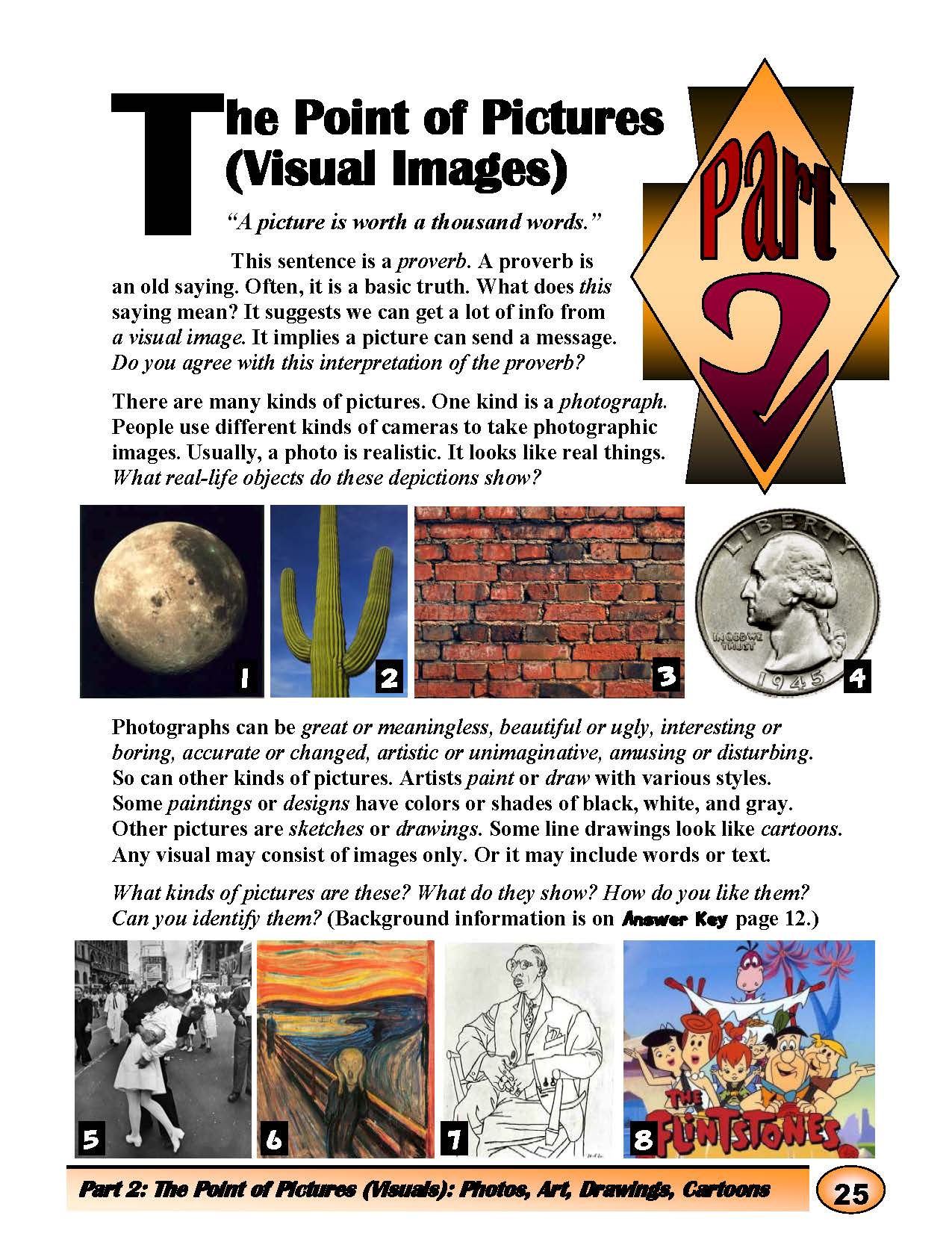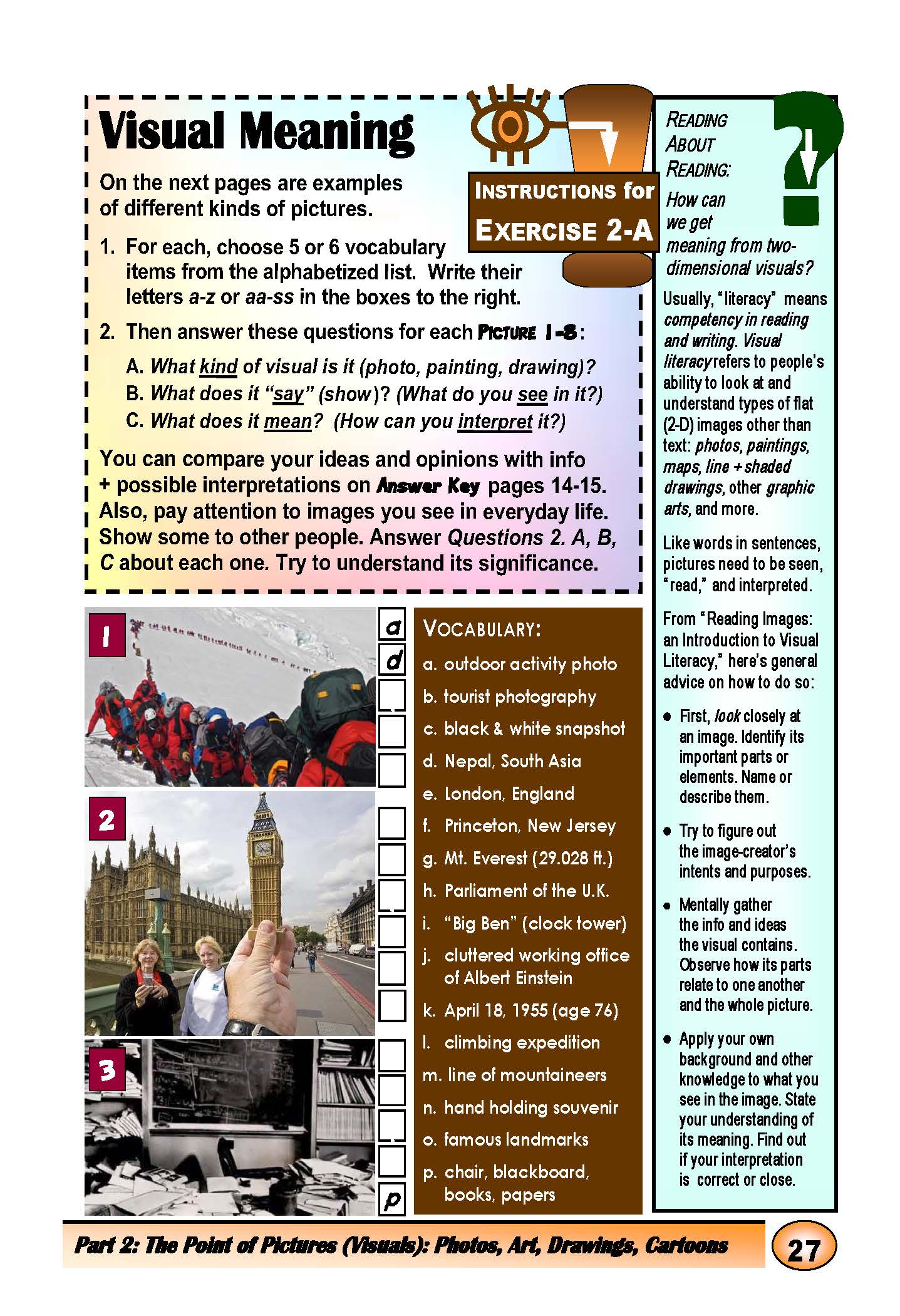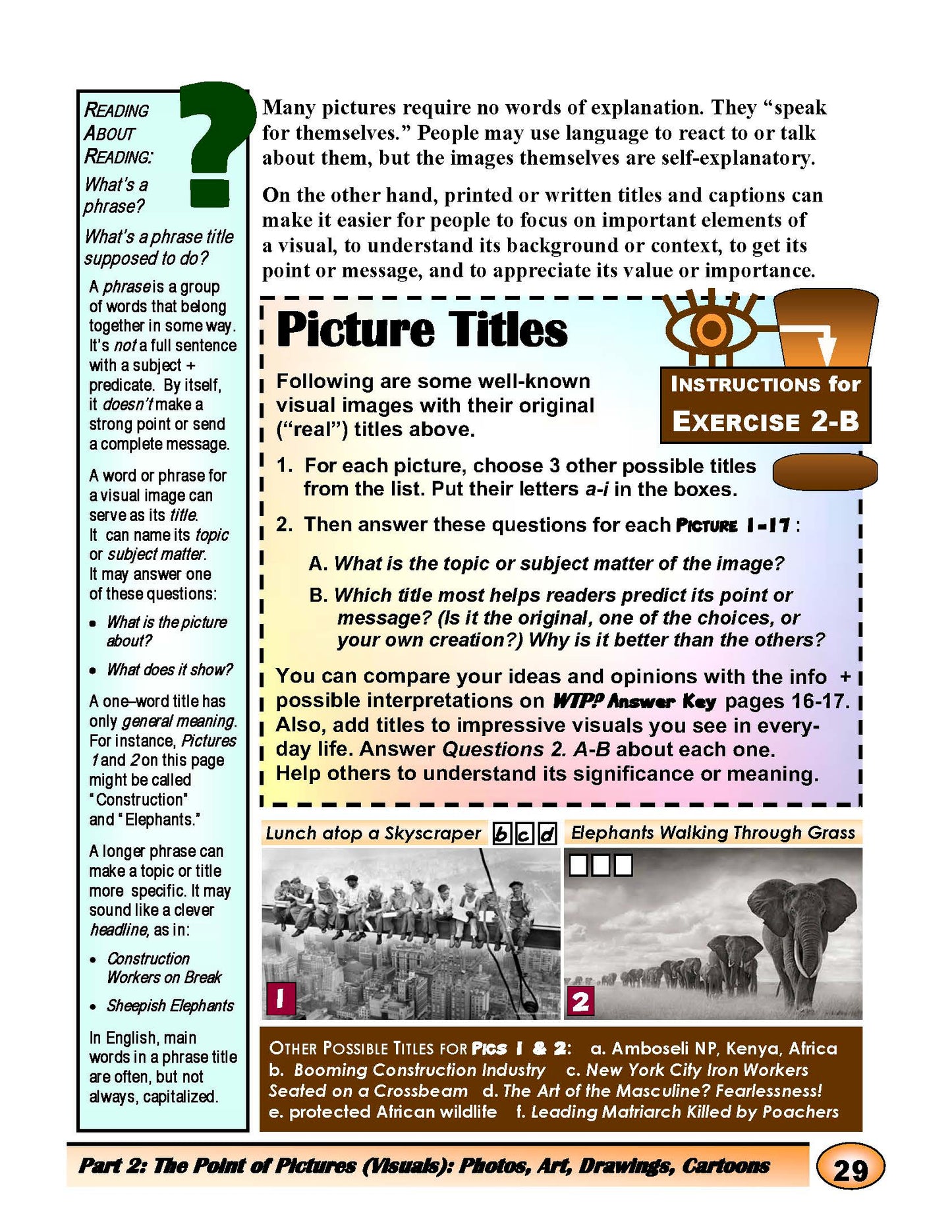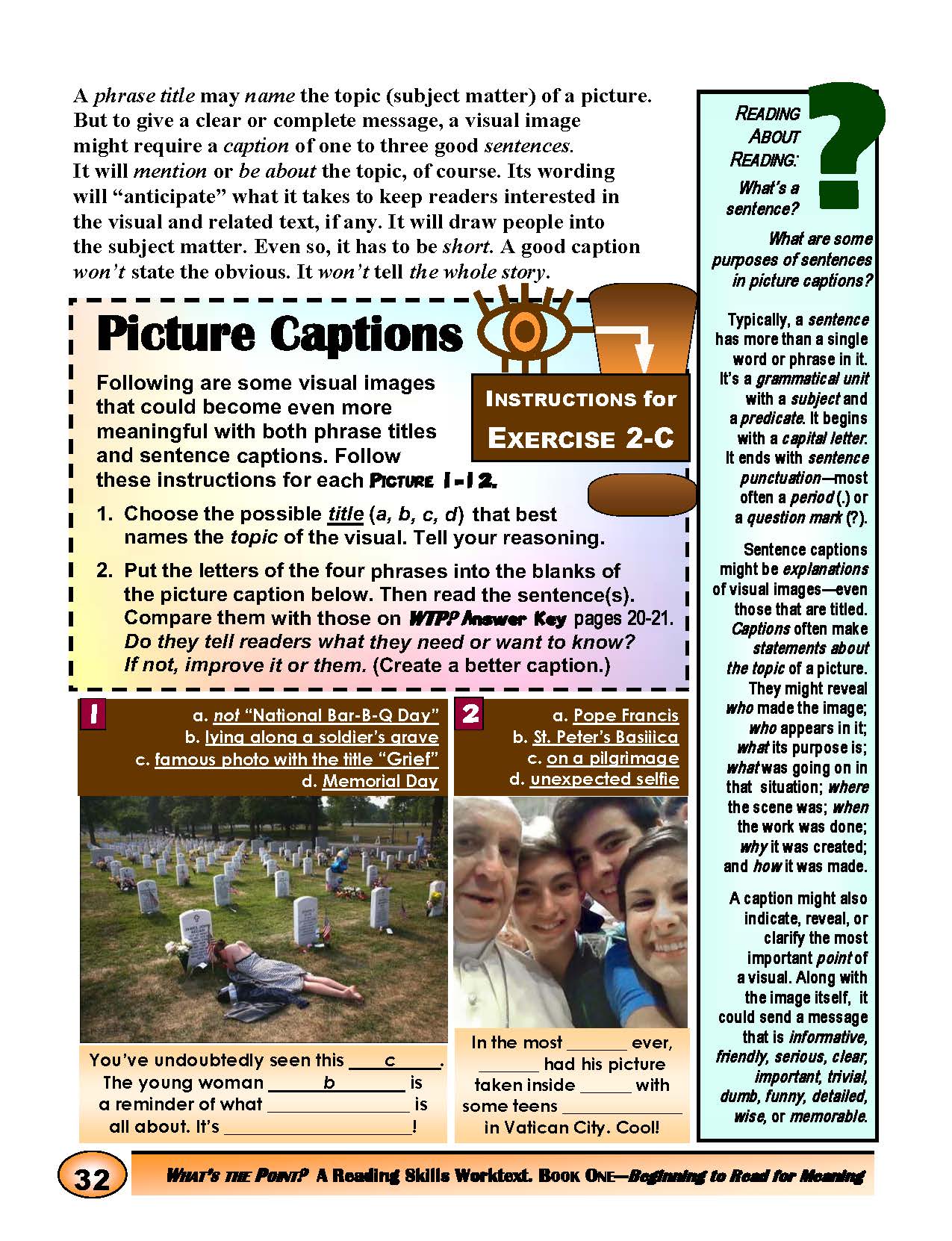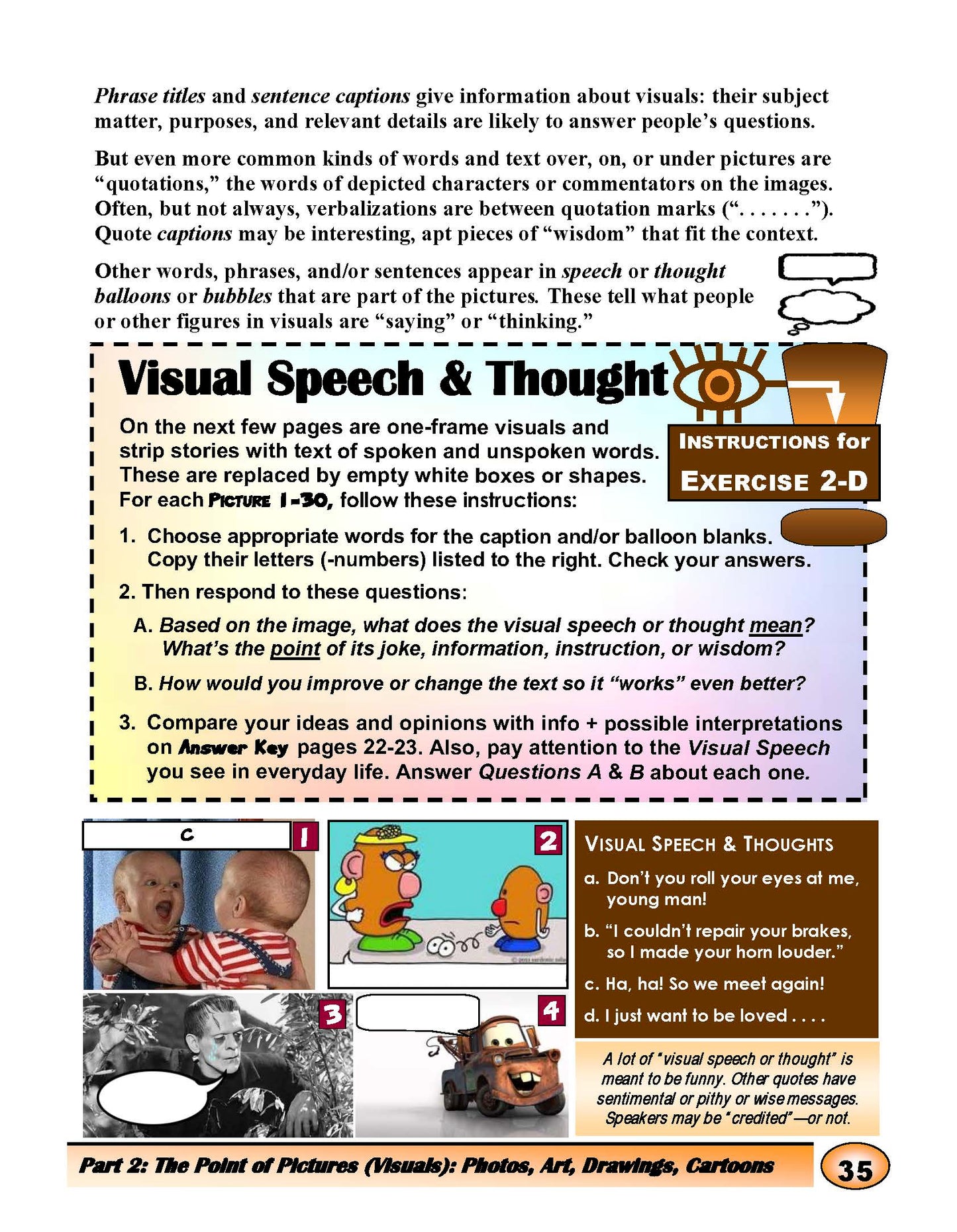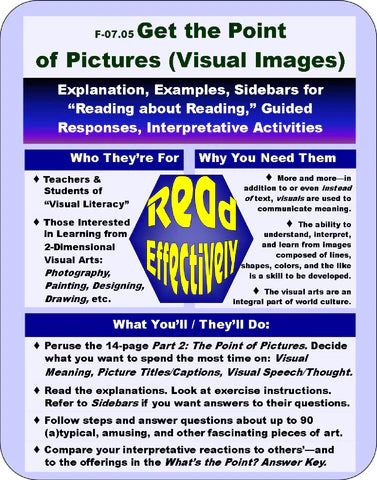1
/
of
6
Work/Life English
F-07.05 View, Comprehend, Get the Point of, Benefit From & Appreciate All Kinds of Pictures
F-07.05 View, Comprehend, Get the Point of, Benefit From & Appreciate All Kinds of Pictures
Regular price
$3.00 USD
Regular price
Sale price
$3.00 USD
Unit price
/
per
What’s the Point? Book One: Beginning to Read for Meaning. Part 2: “The Point of Pictures (Visual Images),” pages 25-38
14 Pages
Who It’s For: Teachers & Students of “Visual Literacy” Interested in Learning from 2-Dimensional Visual Arts: Photography, Painting, Designing, Drawing, & More. Potential Creators of Meaningful Visuals
Why You Need It: More and more—in addition to or even instead of text, visuals are used to communicate meaning. The ability to understand, interpret, and learn from images composed of lines, shapes, colors, and the like is a skill to be developed. The visual arts are an integral part of world culture.
What You’ll / They’ll Do:
[1] Look through the 14-page Part 2: The Point of Pictures. Decide what you want to spend the most time on: Visual Meaning, Picture Titles / Captions, and/or Visual Speech/Thought.
[2] Read the explanations. Look at exercise instructions. Refer to Sidebars if you want answers to their questions.
[3] Follow steps and answer questions about up to 90 (a)typical, amusing, amazing, revealing, and other fascinating pieces of art. Notice that in one exercise, you collect vocabulary to describe pictures. In another, you can match possible titles to photos and choose the one you find most applicable. In a third, after selecting a title, you’ll put phrases into blanks to complete a summarizing caption for each visual. And finally, you’re to match various (pithy, historic, fitting, wise, or funny) sentences to the “Visual Speech & Thought” bubbles where they make sense.
[4] Compare your interpretative reactions to others’ thoughts—and to the offerings in the corresponding sections of F-07.16, the What’s the Point? Answer Key. Continue to collect, examine closely, interpret, share, learn from, and appreciate the many different kinds of visual images that come into your line of vision (field of view).
Couldn't load pickup availability
